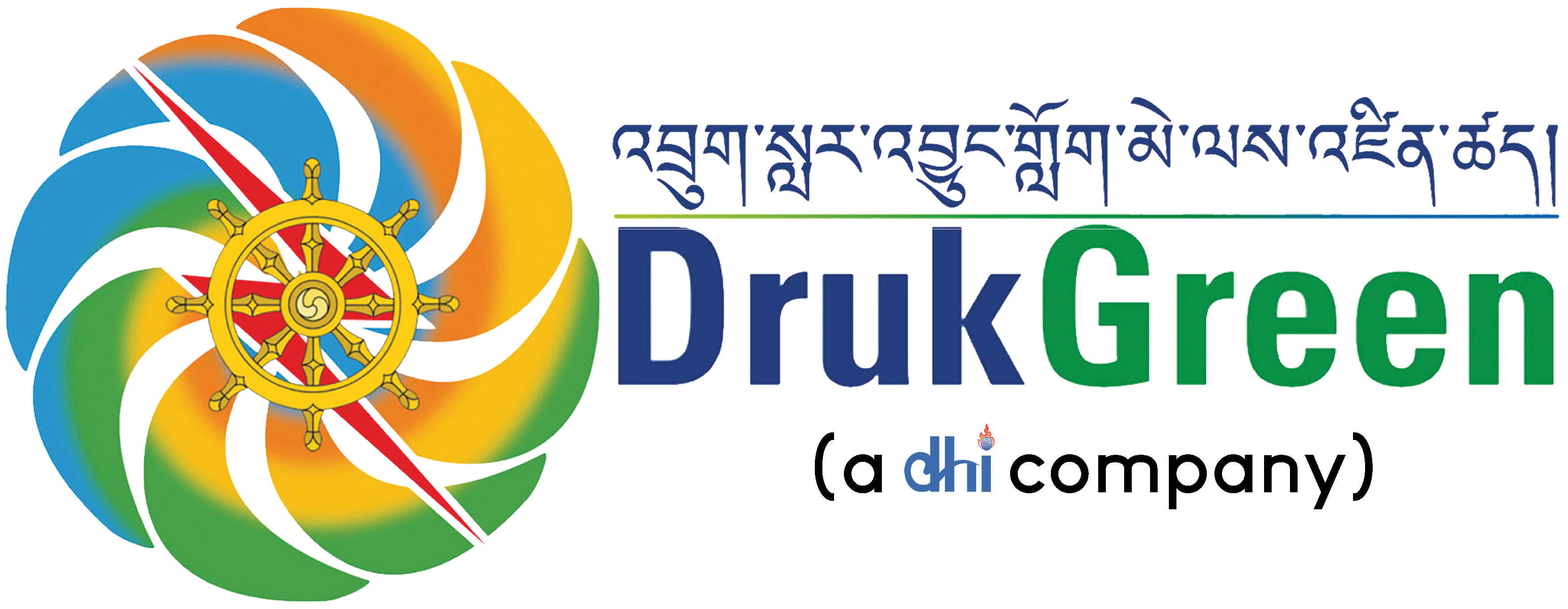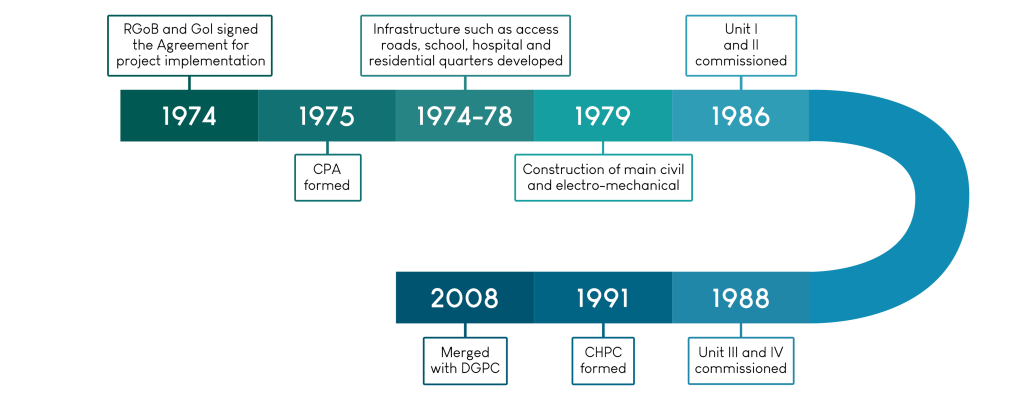Chhukha Hydropower Plant
Project scheme : Run-of-the-river
Project commission : 1986 – 1988
Chhukha hydropower plant (CHP) in south-west Bhutan is the oldest power plant of DGPC. It was then the largest and the most prestigious bilateral project considered by the Royal Government of Bhutan and Government of India.
His Majesty Jigme Dorji Wangchuck, the Third King of Bhutan, envisioned the development of hydropower for lighting homes and establishing industries within Bhutan, as well as earning revenue from the export of surplus power to India. This vision of His Majesty’s was fulfilled by His Majesty Jigme Singye Wangchuck, the Fourth King of Bhutan, when the agreement for Chhukha hydroelectric project was signed between the two governments. Chukha Project Authority (CPA) was constituted to implement the project.
The dam and powerhouse are at an offset of about 6 km from Tsimasham town and 3 km from Chhukha Zero Point on Thimphu-Phuentsholing highway. A 40 m high diversion dam is used for diverting the water from Wangchhu for electricity generation. This water is conveyed through a 6.5 km headrace tunnel. Four spillway gates are used for discharging the excess water.



